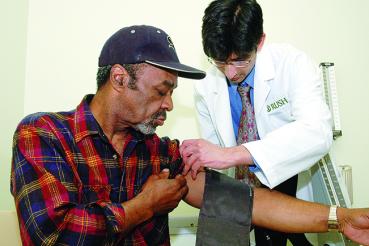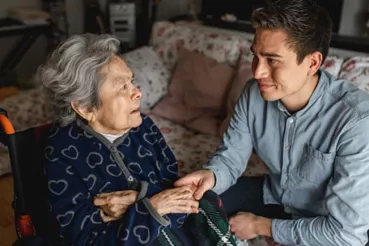Retirement can be an exciting time ... but it can also be a scary time.
How can you maximize the good stuff and minimize the challenges? According to Sandra Swantek, MD, a psychiatrist at Rush who specializes in older adults' mental health, a lot depends on how you enter retirement and how well you've planned for it.
What to watch out for — and how to address it
Swantek points out that not every retirement is a welcome one. Someone who's forced into retirement because of job loss can face issues of self-worth and financial insecurity that make the transition extra stressful. "For a person who'd planned to continue working, it can be truly distressing," she says.
Her first piece of advice: Meet with an accountant or financial planner as soon as you can to get a clear picture of your options, which might include looking for part-time work, tapping into after-tax savings and deciding when to begin drawing Social Security.
Even if you've had the time to plan for a financially secure retirement, it's a complex transition that can trigger or exacerbate a number of emotional and physical issues.
The issue: loss of identity
The first few weeks or months of retirement can feel like a vacation, with plenty of time to sleep in and putter around. But once the novelty wears off, says Swantek, the reality of filling the days in a meaningful way can be difficult.
"When you look at what creates our personal identity, you see that our work forms a significant part of our self-worth," she explains. So unless you take time before retiring to create a structure to sustain you during retirement, it can be hard to find a handhold.
That structure is unique for everyone, Swantek says, but will probably be formed by a mix of relationships with family and friends; hobbies such as reading, music or art; and getting involved in the community.
A solution: Volunteering is a great way to keep using skills that were part of your work life and try applying them in a new way.
For example, Swantek knows a former school principal who volunteers in schools to mentor young people from single-parent homes, and a former attorney who now provides services to low-income people through a free legal clinic.
The issue: social isolation
When the routine of going to a job and interacting with co-workers ends, it can be easy to venture out less and less.
"We are social creatures," Swantek says, "and a lack of social interaction is a strong risk factor for depression that can escalate into feelings of hopelessness or even suicidal thoughts."
A solution: Join a book club or volunteer group, sign up for a class, make regular dates with friends, neighbors and family members — anything that sounds interesting and helps you meet new people, or stay connected to those who are important to you.
And don't hesitate to ask for help if you're feeling overwhelmed by depression, anxiety or stress. Talk to your primary care physician or geriatrician right away; he or she will connect you with someone who can help.
The key is to stay active in some meaningful way. The old saying 'use it, or lose it' goes for everything: your brain, your body and your mental health.
The issue: physical decline
Isolation and depression, if left untreated, can sap your motivation to stay healthy — one of the biggest potential hazards of retirement, according to Swantek.
Lack of exercise contributes to a host of physical problems, including obesity, diabetes, heart disease, high blood pressure, stroke and an increased risk of certain cancers.
Conversely, regular exercise not only helps improve physical health, but boosts your production of mood-improving chemicals like endorphins and serotonins.
A solution: You don't have to join a health club to be active, Swantek says. Brisk walking for 30 minutes three times a week can have significant benefits.
She also suggests low-impact activities like yoga and tai chi, both of which are good for stretching and improving balance, which helps reduce the risk of falling.
And if you've had physical therapy for any reason, keep doing those exercises. Swantek provides her own testimonial: After a back injury 30 years ago, she has continued to do the exercises her therapist taught her, and says that those 30 minutes a day are a great investment in remaining pain-free.
All of Swantek's suggestions for creating a productive retirement have one thing in common. "The key is to stay active in some meaningful way," she says. "The old saying 'use it or lose it' goes for everything: your brain, your body and your mental health."




